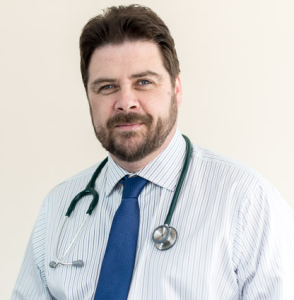 During the silly season over Christmas and New Year, NHS England Chief Nursing Officer Jane Cummings gave an interview to the Daily Telegraph. She advocated better investment in community and primary care services to allow more people to stay well, remain in their own homes, and return home sooner after acute illness or injury.
During the silly season over Christmas and New Year, NHS England Chief Nursing Officer Jane Cummings gave an interview to the Daily Telegraph. She advocated better investment in community and primary care services to allow more people to stay well, remain in their own homes, and return home sooner after acute illness or injury.
Amen to that. Who could disagree with that view? There’s a pressing need to reverse social care cuts; provide adequate capacity in community, intermediate, and end of life care; and adequately resource the primary care medical and nursing workforce.
The headline (then picked up by other mass media) was “NHS must cut beds for better care.” If she was upset by the “pick the most controversial statement” headline, I feel her pain. However, the Sustainability and Transformation Plans (STPs), unveiled by NHS England last December, openly discuss reconfiguration or rationalisation (for which read “closing more beds” in many cases). So perhaps having headlines of a senior clinical adviser lending legitimacy to the idea of closing hospital beds will be welcomed by NHS England.
Professor Steve Iliffe has talked before about “policy zombies” (ideas that keep rising from the dead, however many times they’ve been discredited, however much evidence accumulates against them) and “factoids” (dubious statements repeated so often that they become received wisdom). “We have too many hospital beds and need to close more” is both. The chief nurse is the latest in a long line of proponents. See, for instance, Lord Prior’s assertion that “If we don’t start closing acute beds, the system is going to fall over.” This received orthodoxy is far from radical or challenging anymore. It’s a tired cliché that needs to be put out of its misery.
Why?
To being with, the UK is not “over-bedded” by international standards. The 2014 OECD league tables show that, at 2.8 beds per 1000 people, we rank among the lowest for the number of hospital beds relative to population size. Take the devolved nations out and England is pretty much bottom. We have very few long stay beds, and nursing and residential home places have fallen slightly despite our rapidly ageing demography.
Our hospitals are also among the fullest in the OECD, with occupancy above 90%—even though we know that overcrowding is bad news and that for optimal efficiency and safety mid 80s works better. Even if we do create more community capacity and it delivers, closing more beds will perpetuate the overcrowding issue.
Now, of course, there is major variation in bed occupancy and admission rates. Of course, we could make patient flow and processes more efficient still. There are certainly too many people technically fit for discharge who could be somewhere else if only that hypothetical capacity actually existed. And there are more still who present to hospital and are admitted because of the lack of capacity elsewhere.
Bed audits carried out by external consultancies or as part of implementing “safer, faster, better” style approaches describe people who could hypothetically be cared for in another setting—if that capacity existed. The problem is, it doesn’t.
Social care has been savagely cut since 2010, with budgets estimated to have fallen by 40% and around 900 000 fewer people in receipt of social care by 2016. Local authorities are already anticipating further cuts in services provided. The number of days that beds have been occupied by patients due to delayed transfers of care were shown by the National Audit Office (NAO) to have increased by 31% just from 2013-15 to an all time high. The NAO were also clear that the officially reported figures seriously underestimated the real number of delays.
Meanwhile, the National Audit of Intermediate Care has shown that we only have around half the beds and places we would need to ensure all the patients currently in hospital in need of intermediate care could be cared for elsewhere. There has been no additional increase in commissioned places over three years, and it now takes on average six days to access community rehabilitation from point of referral.
As for solutions in general practice and community nursing, both have a serious workforce crisis and GPs have suffered a rapid increase in workload with no additional funding or workforce to match. It’s likely that most acute admissions to hospital (even with primary care sensitive conditions) present straight to hospital, bypassing the “gatekeeper.” You can’t magic up a highly trained alternative primary care workforce overnight.
Next, we have the evidence problem—there is very little of it to support the idea that providing alternative service delivery models will enable more bed closures. A series of systematic reviews carried out by the Universities of Bristol and Cardiff showed very inconsistent evidence of interventions intended to prevent unplanned adult admissions to hospital. And an equally thorough review of approaches by the Nuffield Trust—including case management, integrated community teams, virtual wards, or telecare—was unconvinced of the evidence base for these interventions reducing hospital activity or bed occupancy.
We can look instead to quality improvement programmes by Sheffield and South Warwickshire NHS Trusts, which looked at patient flow in the emergency care pathway and developed ways to better match capacity with demand. The two trusts wrote detailed learning reports of these programmes for the Health Foundation. Both trusts reduced overall bed occupancy, improved patient flow, and delivered a range of benefits for older people. Neither site would claim that they had miraculously enabled large bed closures on the back of the work.
Case studies of new service models in the UK have shown modest reductions in urgent activity. And even celebrated models of healthcare delivery from overseas, such as Kaiser Permanente or the Veterans Health Administration, required years of concerted change to deliver big shifts of care. There is no quick fix.
Nor is there much evidence that reconfiguration of services or shifting care closer to home will deliver cashable savings across a local health economy. This would require the alternatives to work, to be cheaper than the costs of acute care, and for acute capacity to be closed and remain closed—big assumptions independent experts at the Nuffield Trust and King’s Fund have said.
Talking of “experts,” it might be prudent to listen to those who work at the front and back doors of acute care. The presidents of the Royal College of Emergency Medicine, Society of Acute Medicine, and British Geriatrics Society have all cautioned strongly against losing more beds. “Vested interests”? Hardly. All three specialties have more work than they can deal with, serious workforce gaps, and overfull wards. None stand to gain anything by resisting reconfiguration. Indeed, geriatricians have embraced community and interface working and acute physicians have embraced ambulatory alternatives to hospital care. They are advising against bed closures for one reason only: it will cause system meltdown.
Finally, we need to learn the lessons of recent history. We have been closing beds at pace in the UK for three decades now, losing one third since 1980 at a time when (guess what?) emergency admissions have doubled and rates of emergency readmission within 28 days are climbing equally fast. So that went well?
Meanwhile, we’ve had several rounds of national policy in recent years aimed at reducing urgent activity in hospitals. For instance, the 2013 Better Care Fund, which aimed to enhance social care through NHS capital expenditure, came with expectations of a national reduction in urgent activity of 3.4%. It has continued to rise. Even a flattening of growth in urgent activity would be a result in view of demographic pressures.
As I told the Health Service Journal in 2013, anyone expecting large or rapid reductions in urgent admissions for older people is living in La La land. My being proved right would be no surprise to anyone understanding either frontline realities or the evidence base.
So why does the idea of cutting hospital beds still seem to be in favour?
My guess is because there will probably be no more new money for health or social care in this parliament and no major workforce increase. Therefore, the only way to create the community alternatives to hospital capacity we would all like to see is to take money out of these cost and labour intensive beds. The problem is that, without double running and transitional funding to allow these alternatives to develop, and without at least a reversal of the savage cuts to social care, closing the beds will simply cause complete meltdown.
The crisis in the acute care system is bad enough already. We need senior clinical leaders to speak challengingly, advocate for patients and frontline colleagues, and base their pronouncements on evidence. It’s time to finally bury the bed closure zombie.
David Oliver is a consultant in geriatrics and acute general medicine; a senior visiting fellow at the King’s Fund; and author of The BMJ’s weekly “Acute Perspective” columns, which are all free to access.
Competing interests: None declared.
